Category: Recommended Reading
The Veiled Avengers of Pakistan’s Streaming New Wave
Bilal Qureshi at Film Quarterly:
 The term “churails” is Pakistan’s c-word, translated literally as “witches,” but more accurately understood as a loaded epithet for a demonic, unstable, uncontrollable species of woman, the so-called bitch/witch. Filmmaker Asim Abbasi’s über-stylish series embraces the insult, celebrating the difficult women of Pakistan and reveling in their power through ten hours of exceptional television. The four central women of Churails (Asim Abbasi, 2020–) are drawn from across social classes and life experiences but come together with a mission: to form a detective agency that hunts down the terrible men of Karachi. They work under cover, literally, as their front is a clothing business called Halal Designs, where they meet in a subterranean control room that looks straight out of The Avengers to plot their missions. In a kind of extrajudicial feminist fantasy, they traverse the streets of Karachi in burkas, opening up basements and hidden corners of Pakistani homes in the dark of night, uncovering prostitution rings, secrets, and misogynistic murderers.
The term “churails” is Pakistan’s c-word, translated literally as “witches,” but more accurately understood as a loaded epithet for a demonic, unstable, uncontrollable species of woman, the so-called bitch/witch. Filmmaker Asim Abbasi’s über-stylish series embraces the insult, celebrating the difficult women of Pakistan and reveling in their power through ten hours of exceptional television. The four central women of Churails (Asim Abbasi, 2020–) are drawn from across social classes and life experiences but come together with a mission: to form a detective agency that hunts down the terrible men of Karachi. They work under cover, literally, as their front is a clothing business called Halal Designs, where they meet in a subterranean control room that looks straight out of The Avengers to plot their missions. In a kind of extrajudicial feminist fantasy, they traverse the streets of Karachi in burkas, opening up basements and hidden corners of Pakistani homes in the dark of night, uncovering prostitution rings, secrets, and misogynistic murderers.
more here.
Nadezhda Mandelstam’s Last Letter to Osip Mandelstam
via Ilya Kaminsky’s guest post at The Book Haven:
 Remember the way we brought back provisions to make our poor feasts in all the places where we pitched our tent like nomads? Remember the good taste of bread when we got it by a miracle and ate it together? And our last winter in Voronezh. Our happy poverty, and the poetry you wrote. I remember the time we were coming back once from the baths, when we bought some eggs or sausage, and a cart went by loaded with hay. It was still cold and I was freezing in my short jacket (but nothing like what we must suffer now: I know how cold you are). That day comes back to me now. I understand so clearly, and ache from the pain of it, that those winter days with all their troubles were the greatest and last happiness to be granted us in life.
Remember the way we brought back provisions to make our poor feasts in all the places where we pitched our tent like nomads? Remember the good taste of bread when we got it by a miracle and ate it together? And our last winter in Voronezh. Our happy poverty, and the poetry you wrote. I remember the time we were coming back once from the baths, when we bought some eggs or sausage, and a cart went by loaded with hay. It was still cold and I was freezing in my short jacket (but nothing like what we must suffer now: I know how cold you are). That day comes back to me now. I understand so clearly, and ache from the pain of it, that those winter days with all their troubles were the greatest and last happiness to be granted us in life.
My every thought is about you. My every tear and every smile is for you. I bless every day and hour of our bitter life together, my sweetheart, my companion, my blind guide in life.
more here.
Thursday Poem
Accidents in the Perception of Time
Modes of perception: between channels:
Wordless days, years, periods.
Centuries of drawing with black lead, or burnt sienna on the rock.
Restless scratches. Silhouettes of clumsy figures.
A tangle of lines (animals in motion).
Millennia of the word: winding of words around the body, lashing,
silhouettes of clumsy sentences. Space behind them.
Muting: and a surge of noisy images. Unravel. Span.
Look like you understand.
A hand for joy: draw.
A hand.
A hand: survive, kill.
A mouth for the voice (play, cheat). Open. For someone else.
Like with like (Picasso in the cave). And bridges!
For yourself. For someone else.
by Mária Ferenčuhová
from: Princíp neistoty
publisher: Ars Poetica, Bratislava, 2008
“Read More” for Original Slovak:
Minds Without Brains? The promise and peril of artificial intelligence
John Farrell in Commonweal:
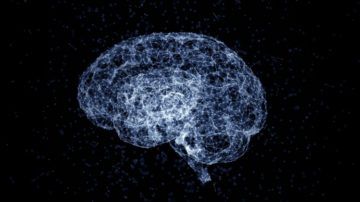 In the view of many scientists, Artificial Intelligence (AI) isn’t living up to the hype of its proponents. We don’t yet have safe driverless cars—and we’re not likely to in the near future. Nor are robots about to take on all our domestic drudgery so that we can devote more time to leisure. On the brighter side, robots are also not about to take over the world and turn humans into slaves the way they do in the movies.
In the view of many scientists, Artificial Intelligence (AI) isn’t living up to the hype of its proponents. We don’t yet have safe driverless cars—and we’re not likely to in the near future. Nor are robots about to take on all our domestic drudgery so that we can devote more time to leisure. On the brighter side, robots are also not about to take over the world and turn humans into slaves the way they do in the movies.
Nevertheless, there is real cause for concern about the impact AI is already having on us. As Gary Marcus and Ernest Davis write in their book, Rebooting AI: Building Artificial Intelligence We Can Trust, “the AI we have now simply can’t be trusted.” In their view, the more authority we prematurely turn over to current machine systems, the more worried we should be. “Some glitches are mild, like an Alexa that randomly giggles (or wakes you in the middle of the night, as happened to one of us), or an iPhone that autocorrects what was meant as ‘Happy Birthday, dear Theodore’ into ‘Happy Birthday, dead Theodore,’” they write. “But others—like algorithms that promote fake news or bias against job applicants—can be serious problems.”
Marcus and Davis cite a report by the AI Now Institute detailing AI problems in many different domains, including Medicaid-eligibility determination, jail-term sentencing, and teacher evaluations:
Flash crashes on Wall Street have caused temporary stock market drops, and there have been frightening privacy invasions (like the time an Alexa recorded a conversation and inadvertently sent it to a random person on the owner’s contact list); and multiple automobile crashes, some fatal. We wouldn’t be surprised to see a major AI-driven malfunction in an electrical grid. If this occurs in the heat of summer or the dead of winter, a large number of people could die.
The computer scientist Jaron Lanier has cited the darker aspects of AI as it has been exploited by social-media giants like Facebook and Google, where he used to work. In Lanier’s view, AI-driven social-media platforms promote factionalism and division among users, as starkly demonstrated in the 2016 and 2020 elections, when Russian hackers created fake social-media accounts to drive American voters toward Donald Trump. As Lanier writes in his book, Ten Arguments for Deleting Your Social Media Accounts Right Now, AI-driven social media are designed to commandeer the user’s attention and invade her privacy, to overwhelm her with content that has not been fact-checked or vetted. In fact, Lanier concludes, it is designed to “turn people into assholes.”
More here.
CineMPC: An algorithm to enable autonomous drone-based cinematography
Ingrid Fadelli in Phys.Org:
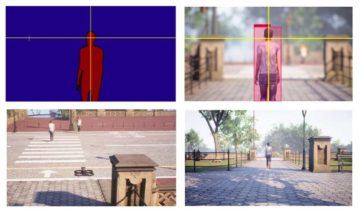 Emerging technologies such as artificial intelligence (AI) algorithms, mobile robots and unmanned aerial vehicles (UAVs) could enhance practices in a variety of fields, including cinematography. In recent years, many cinematographers and entertainment companies specifically began exploring the use of UAVs to capture high-quality aerial video footage (i.e., videos of specific locations taken from above). Researchers at University of Zaragoza and Stanford University recently created CineMPC, a computational tool that can be used for autonomously controlling a drone’s on-board video cameras. This technique, introduced in a paper pre-published on arXiv, could significantly enhance current cinematography practices based on the use of UAVs.
Emerging technologies such as artificial intelligence (AI) algorithms, mobile robots and unmanned aerial vehicles (UAVs) could enhance practices in a variety of fields, including cinematography. In recent years, many cinematographers and entertainment companies specifically began exploring the use of UAVs to capture high-quality aerial video footage (i.e., videos of specific locations taken from above). Researchers at University of Zaragoza and Stanford University recently created CineMPC, a computational tool that can be used for autonomously controlling a drone’s on-board video cameras. This technique, introduced in a paper pre-published on arXiv, could significantly enhance current cinematography practices based on the use of UAVs.
“When reading existing literature about autonomous cinematography and, in particular, autonomous filming drones, we noticed that existing solutions focus on controlling the extrinsincs of the camera (e.g., the position and rotations of the camera),” Pablo Pueyo, one of the researchers who carried out the study, told TechXplore. “According to cinematography literature, however, one of the most decisive factors that determine a good or a bad footage is controlling the intrinsic parameters of the lens of the camera, such as focus distance, focal length and focus aperture.”
A camera’s intrinsic parameters (e.g., focal distance, length and aperture) are those that determine which parts of an image are in focus or blurred, which can ultimately change a viewer’s perception of a given scene. Being able to change these parameters allows cinematographers to create specific effects, for instance, producing footage with varying depth of field or effectively zooming into specific parts of an image. The overall objective of the recent work by Pueyo and his colleagues was to achieve optimal control of a drone’s movements in ways that would automatically produce these types of effects.
More here.
Wednesday, May 5, 2021
Stephen Fry Would Like to Remind You That You Have No Free Will
David Marchese in the New York Times:
Do you ever wonder where your old friend Christopher Hitchens would fit into things now?
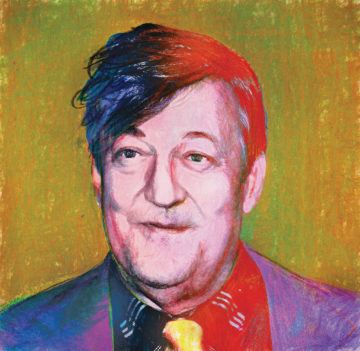 Stephen Fry: I do. I loved him. He was adorable company, but I was also quite scared of him. He was a much tougher figure than I. He didn’t mind being disliked. He didn’t mind being howled down even. He seemed to enjoy it. I can quite imagine Hitchens being on the same platform with a Ben Shapiro perhaps. But I can’t imagine him having come out on the side of Trump. Hitchens just had a style that suited America despite his Britishness. It was the swagger. I miss that the culture doesn’t have enough of these sorts of people. Toward the last year of his life, I would visit another one of them, Gore Vidal, in Los Angeles, where he had his house; it was so overgrown in the garden that it was dark inside. He would retell stories of his great rows with Norman Mailer and Susan Sontag and William Buckley. Their arguments could be mordant and full of venom, but they weren’t as unhappy as so many debates now. There was a kind of joy and pleasure in the fight.
Stephen Fry: I do. I loved him. He was adorable company, but I was also quite scared of him. He was a much tougher figure than I. He didn’t mind being disliked. He didn’t mind being howled down even. He seemed to enjoy it. I can quite imagine Hitchens being on the same platform with a Ben Shapiro perhaps. But I can’t imagine him having come out on the side of Trump. Hitchens just had a style that suited America despite his Britishness. It was the swagger. I miss that the culture doesn’t have enough of these sorts of people. Toward the last year of his life, I would visit another one of them, Gore Vidal, in Los Angeles, where he had his house; it was so overgrown in the garden that it was dark inside. He would retell stories of his great rows with Norman Mailer and Susan Sontag and William Buckley. Their arguments could be mordant and full of venom, but they weren’t as unhappy as so many debates now. There was a kind of joy and pleasure in the fight.
More here.
Lawrence Krauss: Why Climate Science Is Like the Rest of Science
Lawrence M. Krauss in Quillette:
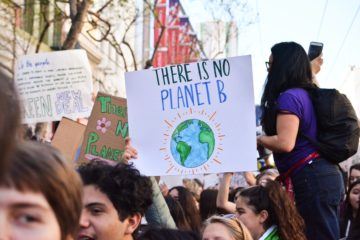 Recent White House initiatives suggest that addressing climate change has risen to the policy forefront of government at the presidential level for the first time in US history. Last week President Biden convened an online international meeting of heads of state on the issue and committed the US to a dramatic effort to reduce greenhouse gas emissions to a level of 50 percent of emissions in 2005 by the year 2030, which will require unprecedented action and cooperation between government and major industries.
Recent White House initiatives suggest that addressing climate change has risen to the policy forefront of government at the presidential level for the first time in US history. Last week President Biden convened an online international meeting of heads of state on the issue and committed the US to a dramatic effort to reduce greenhouse gas emissions to a level of 50 percent of emissions in 2005 by the year 2030, which will require unprecedented action and cooperation between government and major industries.
By and large, the public’s mood has shifted from one of skepticism to support, but because the issue is so deeply embedded in scientific predictions whose details are often absent in popular discussions, statements from prominent scientists have great potential to influence the debate.
As a theoretical physicist whose primary research has been in what is often called “fundamental physics” I am acutely aware that my colleagues can project an air of superiority in being dismissive of other disciplines and the scientists who labor in them. My late friend and colleague Freeman Dyson was an example. Freeman was one of the smartest physicists I have known, and we spoke at length on a few occasions about climate change. His views, while creative and novel, like almost all of his ideas, were nevertheless woefully uninformed. I suspect he felt that because he was smarter than climate scientists, he distrusted their work.
More here.
Apartheid in the Holy Land
Fawaz A. Gerges in Project Syndicate:
 In a new, well-documented report, Human Rights Watch (HRW) asserts that the Israeli government is enforcing a systemic policy to maintain the “domination by Jewish Israelis over Palestinians.” The nearly seven million Palestinians in the occupied territories and within Israel itself face collective persecution under an apartheid system.
In a new, well-documented report, Human Rights Watch (HRW) asserts that the Israeli government is enforcing a systemic policy to maintain the “domination by Jewish Israelis over Palestinians.” The nearly seven million Palestinians in the occupied territories and within Israel itself face collective persecution under an apartheid system.
Pointing to Israeli laws that enshrine extra-political rights for Jews over Arabs living in the same areas, HRW concludes that the Israeli government is “privileging Jewish Israelis while repressing Palestinians, most severely in the occupied territory.” While several hundred thousand Israeli settlers live in the occupied territories as full Israeli citizens, the report notes, 2.7 million Palestinians are concentrated in dense population centers under military rule.
Even more ominous are Israel’s emerging population-control measures. “The authorities have adopted policies to mitigate what they have openly described as a demographic ‘threat’ from Palestinians,” the report avers.
More here.
Sabine Hossenfelder: The Dark Matter Situation has Changed
Wednesday Poem
I asked myself about the present: how wide it was,
how deep it was, how much was mine to keep.
………………………………. -Kurt Vonnegut
Hiking in the Anthropocene
I read the forest’s memoirs leaf by leaf,
trace each tree’s veins branch by branch,
my skin parched for its poetry. I want
nothing but to reside here in the quiet,
the dappled light of a hidden cove,
the sweet, secret sound of solitude
on the side of a mountain. Far above
the fray, the floodwaters, the rushing
cold calamity in the callous void of
conservation, the total lack of self-
preservation or empathy for earth.
Swaddlings losing our wrappings, we
swirl in eddies spawned by our chaotic,
collective flailing. The flood’s fingerprint
etched in judgement, in memoriam, on
the mountain’s moss-cloaked cheek.
by V.C.McCabe
from The Eco Theo Review
CRISPR Madness: Welcome to the Age of Genetic Chaos
Stuart Newman in Counterpunch:
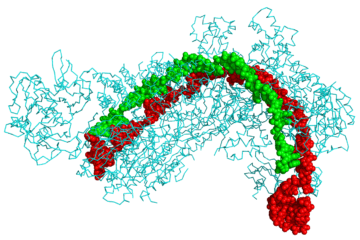 The Nobel prize in chemistry awarded last year to the biochemists Jennifer Doudna and Emmanuelle Charpentier for the genetic modification technique called CRISPR cemented the popular idea that a new era of precision manipulation of hereditary material had arrived. The award came on the heels of the unauthorized use of the technique by the scientist He Jiankui in 2018 in China in an effort to produce individuals (twin girls in this case) resistant to HIV, and a flurry of studies in early 2020 showing that accuracy in altering DNA in a test tube or bacteria in a culture dish, did not hold up when applied to animal embryos. Attempts to modify single genes in human embryos (not intended to be brought to full-term) in fact led to “large-scale, unintended DNA deletions and rearrangements in the areas surrounding the targeted sequence,” aka “genetic chaos.”
The Nobel prize in chemistry awarded last year to the biochemists Jennifer Doudna and Emmanuelle Charpentier for the genetic modification technique called CRISPR cemented the popular idea that a new era of precision manipulation of hereditary material had arrived. The award came on the heels of the unauthorized use of the technique by the scientist He Jiankui in 2018 in China in an effort to produce individuals (twin girls in this case) resistant to HIV, and a flurry of studies in early 2020 showing that accuracy in altering DNA in a test tube or bacteria in a culture dish, did not hold up when applied to animal embryos. Attempts to modify single genes in human embryos (not intended to be brought to full-term) in fact led to “large-scale, unintended DNA deletions and rearrangements in the areas surrounding the targeted sequence,” aka “genetic chaos.”
Dr. He was imprisoned, fined, and fired from his academic position in China for his actions, although it is still not clear to what extent the higher-ups at his institute were aware of it. At a small meeting that I attended in Berkeley in early 2017 where He spoke, he unambiguously stated that “these things are thought of differently in China than in the U.S.” The U.S. scientific establishment uniformly condemned He’s experiments, but when questioned, most scientists, including Doudna herself, and bioethicists (a profession dedicated, with a few exceptions, to getting the public used to what the scientists and bioentrepreneurs have is store for them), left the door open to future manipulation of humans.
In a recent review in the New York Review of Books of four books on the prospects of using CRISPR and related gene modification technologies for the improvement of human biology (“Editing Humanity’s Future”; April 29), including Walter Isaacson’s paean to Jennifer Doudna, the biotechnology editor and writer Natalie de Souza addresses the safety of such manipulations as a fundamental requirement for moving forward with human applications. But de Souza, in common with the authors of all the books under review, downplays the fact that “safety” means entirely different things when therapeutic alterations of the tissues of a mature body are considered, in contrast to those that are administered at early embryonic stages. The engineering of retinal cells to relieve blindness, for example, a promising, although still uncertain, application of the technique, is not comparable to ridding embryos of genes associated with cystic fibrosis, HIV susceptibility, or sickle cell disease.
More here.
First genetically modified mosquitoes released in the United States
Emily Waltz in Nature:
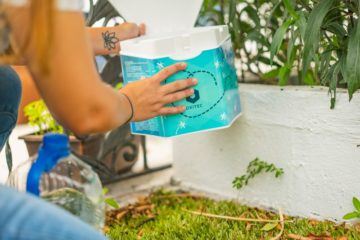 After a decade of fighting for regulatory approval and public acceptance, a biotechnology firm has released genetically engineered mosquitoes into the open air in the United States for the first time. The experiment, launched this week in the Florida Keys — over the objections of some local critics — tests a method for suppressing populations of wild Aedes aegypti mosquitoes, which can carry diseases such as Zika, dengue, chikungunya and yellow fever.
After a decade of fighting for regulatory approval and public acceptance, a biotechnology firm has released genetically engineered mosquitoes into the open air in the United States for the first time. The experiment, launched this week in the Florida Keys — over the objections of some local critics — tests a method for suppressing populations of wild Aedes aegypti mosquitoes, which can carry diseases such as Zika, dengue, chikungunya and yellow fever.
…Aedes aegypti makes up about 4% of the mosquito population in the Keys, a chain of tropical islands off the southern tip of Florida. But it is responsible for practically all mosquito-borne disease transmitted to humans in the region, according to the Florida Keys Mosquito Control District (FKMCD), which is working closely with Oxitec on the project. Researchers and technicians working on the project will release bioengineered male Aedes aegypti mosquitoes, which don’t bite, to mate with the wild female population, responsible for biting prey and transmitting disease. The genetically engineered males carry a gene that passes to their offspring and kills female progeny in early larval stages. Male offspring won’t die but instead will become carriers of the gene and pass it to future generations. As more females die, the Aedes aegypti population should dwindle.
…In late April of this year, project researchers placed boxes containing Oxitec’s mosquito eggs at six locations in three areas of the Keys. The first males are expected to emerge within the first two weeks of May. About 12,000 males will exit the boxes each week over the next 12 weeks. In a second phase later this year, intended to collect even more data, nearly 20 million mosquitoes will emerge over a period of about 16 weeks, according to Oxitec.
More here.
Christopher Clark: The 1848 Revolutions
The Darwin of the Classics
Tim Riley at the LARB:
 “The effects of oral states of consciousness,” Walter Ong wrote in his 1982 book Orality and Literacy, “are bizarre to the literate mind.” Parry theorized that, if he could find a find a culture where bards still practiced an oral tradition, singing songs as long as Homer’s (over 12,000 lines), he could prove the links between Homeric verse and Bosnian song that scholars had long been puzzling over. In his approach, Parry worked a different field with some of the same purpose Alan Lomax did in the American South during this same period, collecting a rural folk tradition in order to catalog the vast body of American song. The Muslim Slavs of Bosnia, where Parry focused his recording, were called “guslars,” and played a single-string instrument called the “gusle.”
“The effects of oral states of consciousness,” Walter Ong wrote in his 1982 book Orality and Literacy, “are bizarre to the literate mind.” Parry theorized that, if he could find a find a culture where bards still practiced an oral tradition, singing songs as long as Homer’s (over 12,000 lines), he could prove the links between Homeric verse and Bosnian song that scholars had long been puzzling over. In his approach, Parry worked a different field with some of the same purpose Alan Lomax did in the American South during this same period, collecting a rural folk tradition in order to catalog the vast body of American song. The Muslim Slavs of Bosnia, where Parry focused his recording, were called “guslars,” and played a single-string instrument called the “gusle.”
To help in his field research, Parry — working with Lord, who was then his graduate student — brought along some of the same bulky portable recording gear used by Leoš Janáček and Béla Bartók to record singers.
more here.
Burning Man: The Ascent of D H Lawrence
David Wheatley at Literary Review:
 Beyond all this violent contrarianism, the Lawrence Wilson wishes to paint is a figure of ‘mysteries rather than certainties’. The ‘burning man’ of her title derives from a letter of 1913 in which Lawrence the would-be martyr for his art compares himself to his namesake saint, who famously embraced his martyrdom (death on a gridiron) to the point of proclaiming, ‘Turn me over brothers, I am done enough on this side.’ Wilson’s target is less a straightforward biography than a sifting of Lawrence’s legacy for what remains urgent and alive, the aim being to shed its infernal baggage in search of an abiding paradise. One threat to her Dante comparison is how remote from heaven Lawrence increasingly appears, his attachment to the physical world growing shriller the weaker his grip on it becomes. But these tensions are all part of the drama, not least where the question of sex is concerned. Sex in Lawrence must always be a full-on sacramental affair, but in everyday life he was uptight and prissy about being touched, unlike the more easy-going Frieda.
Beyond all this violent contrarianism, the Lawrence Wilson wishes to paint is a figure of ‘mysteries rather than certainties’. The ‘burning man’ of her title derives from a letter of 1913 in which Lawrence the would-be martyr for his art compares himself to his namesake saint, who famously embraced his martyrdom (death on a gridiron) to the point of proclaiming, ‘Turn me over brothers, I am done enough on this side.’ Wilson’s target is less a straightforward biography than a sifting of Lawrence’s legacy for what remains urgent and alive, the aim being to shed its infernal baggage in search of an abiding paradise. One threat to her Dante comparison is how remote from heaven Lawrence increasingly appears, his attachment to the physical world growing shriller the weaker his grip on it becomes. But these tensions are all part of the drama, not least where the question of sex is concerned. Sex in Lawrence must always be a full-on sacramental affair, but in everyday life he was uptight and prissy about being touched, unlike the more easy-going Frieda.
more here.
Tuesday, May 4, 2021
Adjunct Hell: The rise of a new kind of campus novel
Maggie Doherty in The Nation:
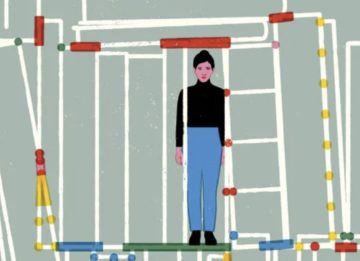 Not so long ago, there seemed to be something radical in rejecting the future. Looking back, it’s easy to see why. In the 1990s, history was over; the United States and capitalism had won. Strutting conservative televangelists and smug liberal technocrats took turns running the world. Globalization promised more of everything: more productivity, more innovation, more wealth. Economic prosperity and regressive moralism went hand in hand. The nuclear family was once again sacred, and non-normative sexuality remained stigmatized: Don’t ask, but also don’t tell. Conservatives—as well as some liberals—supported any policy that promised to protect children, born and unborn, so they might take advantage of the bright future that awaited them. Meritocracy was supposedly thriving, even as inequality prevailed everywhere.
Not so long ago, there seemed to be something radical in rejecting the future. Looking back, it’s easy to see why. In the 1990s, history was over; the United States and capitalism had won. Strutting conservative televangelists and smug liberal technocrats took turns running the world. Globalization promised more of everything: more productivity, more innovation, more wealth. Economic prosperity and regressive moralism went hand in hand. The nuclear family was once again sacred, and non-normative sexuality remained stigmatized: Don’t ask, but also don’t tell. Conservatives—as well as some liberals—supported any policy that promised to protect children, born and unborn, so they might take advantage of the bright future that awaited them. Meritocracy was supposedly thriving, even as inequality prevailed everywhere.
In response, a reasonable nihilism emerged in the era’s counterculture. If conservatives, and even some liberals, were “pro-life” and “focused on the family,” all in the name of a bountiful future provided to us by the end of the Cold War, then what positions should radicals take?
More here.
Sean Carrol’s Mindscape Podcast: Niall Ferguson on Histories, Networks, and Catastrophes
Sean Carroll in Preposterous Universe:
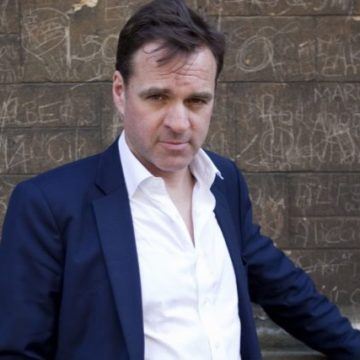 The world has gone through a tough time with the COVID-19 pandemic. Every catastrophic event is unique, but there are certain commonalities to how such crises play out in our modern interconnected world. Historian Niall Ferguson wrote a book from a couple of years ago, The Square and the Tower, that considered how an interplay between networks and hierarchies has shaped the history of the world. This analysis is directly relevant to how we deal with large-scale catastrophes, which is the subject of his new book, Doom: The Politics of Catastrophe. We talk about global culture as a complex system, and what it means for our ability to respond to crisis.
The world has gone through a tough time with the COVID-19 pandemic. Every catastrophic event is unique, but there are certain commonalities to how such crises play out in our modern interconnected world. Historian Niall Ferguson wrote a book from a couple of years ago, The Square and the Tower, that considered how an interplay between networks and hierarchies has shaped the history of the world. This analysis is directly relevant to how we deal with large-scale catastrophes, which is the subject of his new book, Doom: The Politics of Catastrophe. We talk about global culture as a complex system, and what it means for our ability to respond to crisis.
More here.
Jeffrey Sachs: Share the Intellectual Property on COVID-19
Jeffrey D. Sachs in Project Syndicate:
 The governments of South Africa, India, and dozens of other developing countries are calling for the rights on intellectual property (IP), including vaccine patents, to be waived to accelerate the worldwide production of supplies to fight COVID-19. They are absolutely correct. IP for fighting COVID-19 should be waived, and indeed actively shared among scientists, companies, and nations.
The governments of South Africa, India, and dozens of other developing countries are calling for the rights on intellectual property (IP), including vaccine patents, to be waived to accelerate the worldwide production of supplies to fight COVID-19. They are absolutely correct. IP for fighting COVID-19 should be waived, and indeed actively shared among scientists, companies, and nations.
The pharmaceutical industry and the governments of several vaccine-producing countries, including the United States and the United Kingdom, as well as the European Commission, have been resisting the IP waiver, while 150 public leaders and experts have sent an open letter to US President Joe Biden in support of it. There is no longer any question about who is right. Given the surge of COVID-19 in several regions, most recently in India, the continuing emergence of new and deadly variants of the virus, and the inability of the current vaccine producers to keep pace with global needs, an IP waiver or its equivalent has become a practical urgent need as well as a moral imperative.
As a general principle, IP should not stand in the way of scaling up production to fight COVID-19 or any other public health emergency.
More here.
